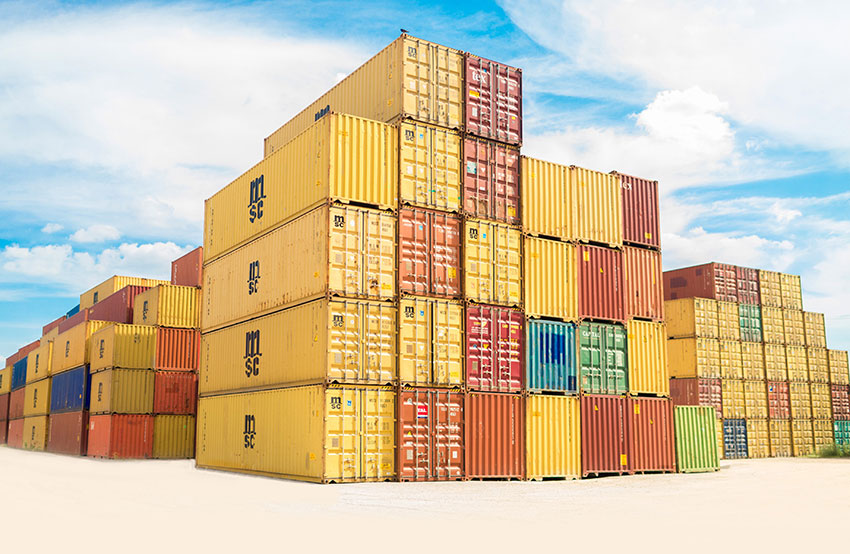Show:
What eCommerce Startups Need to Know About Logistics
The thrill of the startup is all about the products and sale, getting people to like your company, and trust your messaging so that you can grow. eCommerce logistics is often an afterthought, and that’s why it can get in the way of success.

Logistics, covering the way you pack and ship orders plus how things get back to you, is an expensive process for any business. There are things you can do to make it work better for you and have customers pick up some of the tab, but it requires direct action.
For startups, that often means learning the process and what matters most. Here are our thoughts on logistics for eCommerce and growing businesses.
1. Size and Weight Matter
The rise in flat-rate boxes will lead some startups to think fulfillment costs are stable and can be a static line item. Few things are further from the truth in your eCommerce startup world.
The size and weight of your products and their packaging are going to impact your shipping costs. FedEx, UPS, and USPS all use dimensional weight calculations, called DIM weight, to determine your costs. So, a small but heavy product could have a higher expense than a mid-sized but light product.
Ecommerce startups should look for DIM weight calculators to help them understand and predict some shipping costs — just be sure to verify that your calculator uses the most recent data and rates.
The good news is that you can adopt eCommerce platforms and website tools that’ll provide some calculators and make suggestions on what carriers to use to get the best rate or the fastest delivery.
Lots of companies can’t handle all the load that reaches their dock, so they might charge extra funds to open the load and reload it on another truck. So if you are shipping pallets per day with such a company, you’ll have to pay for breaking the pallets apart. Lots of business owners are reaching out to 3PL Warehousing to ensure smooth delivery. These companies are equipped with knowledgeable staff and advanced technology that ensures your shipments are delivered on time and in perfect condition. They also provide warehousing services, which can help you store goods securely and efficiently.
2. Track Your Volume
Every business loves repeat customers who make a lot of orders. That means carriers love them too!

To encourage you to be a repeat customer, carriers are willing to make deals with companies who ship high volumes of product. If your sales are going well, consider reaching out to carriers to negotiate volume-based rate reductions. Reach out to your carrier account managers to get an understanding of what volume you need to reach or how else you might save.
This is actually one reason that companies consider outsourcing eCommerce fulfillment. Working with a 3PL fulfillment company means you don’t have to be making high-volume sales to get that rate reduction because the 3PL has enough other customers to reach those levels. Even if you don’t make this move, it’s worth talking with a fulfillment company because they can help you understand other areas of savings, such as packaging, or when you might want to look into additional insurance coverage.
3. It’s Not Delivery. It’s Returns
Shipping your goods to customers can be a big project to tackle, but most eCommerce startups learn how to manage it quickly. You’ll figure out how to count inventory, track orders, pack boxes their best with filler materials, and set up a schedule to take boxes to a carrier location or schedule your pickup.

What’s inevitable and often more difficult to handle is when a customer returns a product.
While you’re building out the fulfillment process in your location or warehouse, try to picture how the reverse works. If someone sends you a product back, where does it go after it is dropped off? Do you have shelf space for returns? What are your standards for checking the product and determining if it can be resold?
Here’s the biggie that we see: What’s the actual process for updating your inventory counts when products are returned and who is specifically responsible for taking those steps?
You’ll want to hammer out the specifics so that you’re accurately counting inventory and ensuring that the goods you sell meet specific criteria. Getting returns right can save your business on added expenses, and it’ll improve how customers experience your services. Making returns easy for people can increase the likelihood that they’ll buy from you again. So, keep policies clear, and try to make them work for you and your customers.
4. Know Your Costs and Charges
If you go to 20 different eCommerce marketplaces, you may find 20 different costs for the same order. There’s a lot to these charges, and many of them have to do with eCommerce logistics.
Some eCommerce companies will bake the cost of shipping and logistics activities into all product pricing, so customers only have to worry about a shipping charge if they want something expedited. Others set flat rates for shipping all orders, which can help ensure you cover costs — the aim is to have small orders’ fees make up for larger purchases. Free shipping at different thresholds is a tool some use to encourage customers to buy more so that product costs cover all their shipping, warehouse, and other fulfillment expenses.

You can charge customers however best works for your business. Review competitors and the overall market to see what customers see as attractive while also helping you stay affordable and competitive. Don’t just look at the direct competition. If there’s a related industry selling goods at the same price as yours, see what the leaders in that space do.
Understanding how eCommerce companies will charge customers for shipping and the logistics costs for its products — warehousing, storage space, packing and unpacking, labor, etc. — makes it easy to ensure they are not losing money on sales. Figuring this out before you start selling products will help you have a consistent offer or make it easy to A/B test offers, managing customer expectations.
5. Remember Logistics Is Branding
People generally don’t blame FedEx or UPS when there’s a problem with their order. Yes, they may gripe about the carrier not dropping something off or being late, but they look to you to solve it.
From the moment an order is paid for and shipped through its final delivery is one giant piece of customer service. No matter who makes a mistake in this chain, your team will be the one to address concerns, make things right, and reassure the customer.
We may not think of it this way because there’s someone else delivering products for us, but logistics work is all about your specific brand. Work with partners to keep orders accurate and on-time so you can be seen as the team that gets it right instead of always getting it wrong.

 Return to Previous Page
Return to Previous Page








